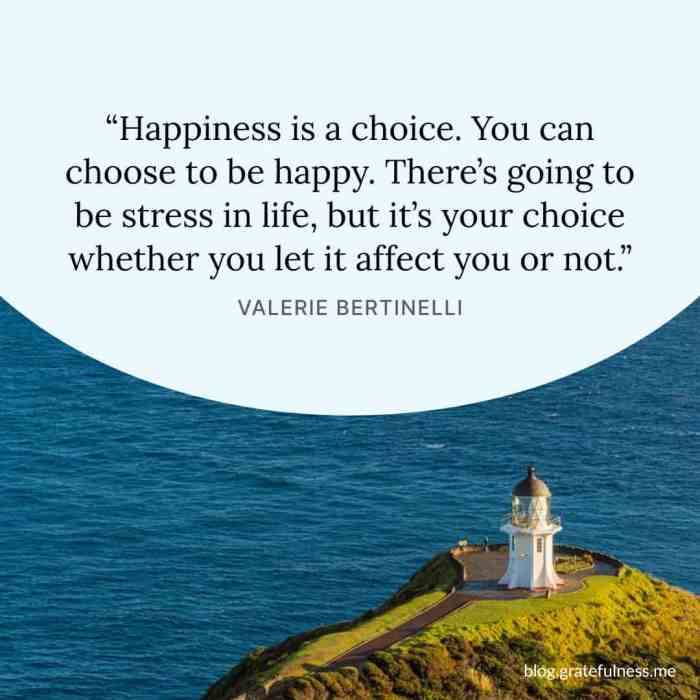6 ways your behavior being controlled – 6 ways your behavior is being controlled. This insightful exploration dives into the subtle and not-so-subtle ways others might manipulate your actions. We’ll uncover the patterns, motivations, and ultimately, empower you to recognize and resist control in your life.
From subtle manipulations to overt attempts at control, this guide explores the full spectrum of controlling behaviors. We’ll analyze the impact on your well-being, and equip you with strategies to cope and build resilience against such tactics.
Identifying Controlling Behaviors
Understanding and recognizing controlling behaviors is crucial for maintaining healthy relationships and personal well-being. Often, these behaviors manifest subtly, making them difficult to identify at first glance. Learning to spot these patterns can empower you to protect yourself from manipulation and foster more balanced interactions. Recognizing the difference between helpful guidance and controlling tactics is key to navigating these situations effectively.Controlling behaviors, whether overt or subtle, can significantly impact your decision-making process.
This influence can range from minor discomfort to major life alterations. Understanding the tactics used in these behaviors allows you to respond with greater awareness and assertiveness.
Subtle Ways People Might Try to Control Your Behavior
Controlling behaviors often manifest in subtle ways, making them hard to detect. These tactics aim to influence your actions without direct confrontation. Examples include:
- Emotional manipulation: This involves using guilt, fear, or flattery to sway your choices. For instance, a partner might express exaggerated concern or sadness if you suggest pursuing a hobby they don’t approve of, creating emotional pressure to change your mind.
- Isolation: Limiting your contact with friends and family is a common tactic. A controlling individual might discourage you from spending time with people who offer alternative perspectives or support.
- Constant criticism: This involves frequent, often unfounded, criticism of your choices and actions, making you doubt your judgment and self-worth. This might manifest as a constant stream of complaints about your clothing choices or lifestyle decisions.
- Financial control: Controlling access to money can restrict your freedom and independence. For example, a partner might manage all finances, preventing you from making personal purchases or investments without their approval.
- Monitoring your activities: This includes tracking your whereabouts, phone calls, or online activity. Constant questioning about your plans or demanding to know your location can create an atmosphere of mistrust and control.
Impact on Decision-Making
The subtle manipulations described above can significantly affect your decision-making process. They create an environment where you may feel pressured to conform to the controller’s wishes rather than act according to your own values and needs. This can lead to:
- Reduced self-confidence: Constant criticism or emotional manipulation can erode your self-esteem, making it harder to trust your own judgment.
- Fear of expressing opinions: Fear of negative consequences or rejection can discourage you from expressing your thoughts or preferences.
- Difficulty setting boundaries: You might struggle to assert your needs or say no to requests that feel uncomfortable.
Constructive Guidance vs. Controlling Behavior
It’s important to differentiate between constructive guidance and controlling behavior. Guidance offers support and encouragement for personal growth, while controlling behavior seeks to dictate your actions and choices.
- Constructive guidance: Focuses on providing support and suggestions that empower individuals to make informed decisions, rather than dictate those decisions.
- Controlling behavior: Aims to manipulate or restrict the person’s autonomy, making choices for them based on the controller’s preferences.
Comparison of Control Tactics
The following table Artikels common control tactics and their characteristics, helping to distinguish between constructive support and controlling behavior.
| Control Tactic | Characteristics | Example |
|---|---|---|
| Emotional Manipulation | Using guilt, fear, or flattery to influence decisions | Expressing exaggerated sadness if you pursue a hobby they don’t like |
| Isolation | Restricting contact with supportive individuals | Discouraging you from spending time with friends who offer alternative perspectives |
| Constant Criticism | Frequent and unfounded criticism to undermine self-worth | Constantly criticizing your clothing choices or lifestyle |
| Financial Control | Restricting access to and control over finances | Managing all finances and not allowing you to make personal purchases |
| Monitoring Activities | Tracking whereabouts, phone calls, or online activity | Constant questioning about plans or demanding location information |
Recognizing Patterns of Control
Uncovering controlling behavior isn’t always straightforward. It often manifests in subtle, seemingly harmless ways, making it crucial to recognize patterns of behavior that might indicate a power imbalance. This can involve identifying common tactics used to exert control and understanding how repeated actions can signal a deeper issue. By paying attention to these indicators, you can better protect yourself from manipulation.Understanding how control operates is vital for recognizing the signs.
Controlling behavior isn’t always about outright aggression; it can be more insidious, creeping into daily interactions and relationships. Identifying these patterns is about recognizing the subtle shifts in power dynamics that can lead to a person feeling trapped or manipulated. It is crucial to remember that healthy relationships are characterized by mutual respect and autonomy.
Common Patterns of Controlling Behavior
Controlling behavior often involves a range of tactics aimed at diminishing a person’s independence and autonomy. These tactics may not always be malicious, but they can have a profoundly negative impact on the controlled individual’s well-being. The key is to recognize the pattern, not necessarily the intent.
- Excessive Monitoring: Constant checking-in, questioning, or demanding constant updates about activities, whereabouts, and interactions can create a sense of being watched. This can include requesting frequent calls, texts, or social media updates, or scrutinizing personal belongings or digital devices.
- Isolation: Controlling individuals may isolate their targets from friends, family, or other support systems. This can be achieved by discouraging contact, making negative comments about others, or creating conflict between the target and their support network. This often limits the target’s ability to seek outside perspective or support.
- Manipulation and Gaslighting: Manipulating information, twisting facts, or outright denying past events (gaslighting) are common tactics used to undermine the target’s perception of reality. This can lead to confusion, self-doubt, and a sense of distrust in one’s own judgment.
- Emotional Control: Controlling individuals may attempt to regulate the target’s emotions, frequently criticizing, belittling, or undermining their feelings. This can include dismissing concerns, minimizing distress, or even making the target feel responsible for the other person’s emotional state.
- Financial Control: Controlling finances, such as limiting access to funds, controlling spending habits, or monitoring bank accounts, can limit a person’s autonomy and ability to make independent decisions. This often impacts the target’s ability to support themselves or make personal choices.
- Decision-Making Interference: Controlling individuals may make decisions for the target or interfere in their decision-making process. This can manifest as dictating choices about work, social activities, or personal relationships, often presenting their choices as the only valid option.
Warning Signs of Control Attempts
Recognizing subtle signs is key to preventing control from escalating. These warning signs are often overlooked, but their persistence can signal a pattern of control. These signals, if noticed and addressed, can prevent the situation from deteriorating.
- Frequent Criticism and Belittling: A pattern of criticism and negativity directed towards the target, regardless of the situation, often indicates an attempt to undermine their self-worth and confidence. This behavior can make the target question their own judgment and decisions.
- Threats or Intimidation: The use of threats, whether direct or subtle, to manipulate the target’s behavior is a significant warning sign. This can include implied threats or creating a climate of fear and anxiety. Such behavior creates an environment of unease and prevents open communication.
- Guilt-Tripping: Using guilt to manipulate the target’s behavior or feelings is a tactic frequently used in controlling relationships. This can involve making the target feel responsible for the other person’s unhappiness or emotional state.
- Controlling Communication: Controlling individuals may monitor communication, scrutinize messages, or limit contact with others. This can involve controlling access to phones, computers, or other communication devices.
Questions to Help Recognize Patterns
Asking yourself specific questions can help you identify if you’re experiencing controlling behavior. These questions can assist in recognizing potential patterns of control.
- Do I feel pressured to change my behavior or beliefs to accommodate someone else’s expectations?
- Am I constantly being criticized or judged, regardless of my actions?
- Do I feel like I’m walking on eggshells to avoid upsetting someone?
- Have I noticed a pattern of someone isolating me from my support system?
- Am I feeling confused or doubting my own perceptions due to someone’s actions or words?
Understanding Motivations Behind Control: 6 Ways Your Behavior Being Controlled
Controlling behavior isn’t always malicious; often, it stems from deeper psychological and emotional needs. Understanding these underlying motivations is crucial for recognizing and addressing the behavior effectively. This exploration delves into the complex interplay of factors that drive control, focusing on the root causes rather than simply the surface-level manifestations.The motivations behind controlling behavior are multifaceted, ranging from a desire for security and power to deeply ingrained insecurities and fears.
Understanding these motivations is the first step towards fostering healthier relationships and challenging patterns of control. This often involves acknowledging the potential for unconscious motivations to influence conscious actions.
Potential Motivations for Controlling Behavior
The motivations behind controlling behavior are often rooted in an individual’s past experiences and their current emotional state. They can stem from a variety of sources, including a need for validation, a fear of abandonment, or a desire to maintain power and influence.
- Need for Control and Power: Some individuals feel a strong need to control their environment and others to maintain a position of power. This desire can stem from a deep-seated need to feel in charge and capable. This may manifest in subtle or overt ways, such as attempting to dictate decisions or influence the actions of those around them. This control can be a form of self-preservation, a way to manage uncertainty and anxiety.
- Insecurity and Fear: Insecurity and fear often play a significant role in controlling behavior. Individuals who feel insecure or anxious might attempt to control others to reduce their own feelings of vulnerability. They may feel a loss of control in their own lives, so they try to exert control in other areas. This may involve micromanaging, constantly questioning, or demanding reassurance.
Examples include constantly checking up on loved ones or demanding constant attention. Fear of the unknown, or even fear of loss of status or power, can also be a significant contributor.
- Low Self-Esteem and Validation Seeking: Individuals with low self-esteem may attempt to control others to gain a sense of self-worth. They might seek validation through their control, believing that their worth is directly tied to their ability to influence others. This control may manifest in subtle ways, such as subtly manipulating situations to gain an advantage or demanding praise for their actions. This desire for validation often stems from unresolved issues with self-acceptance and a lack of self-confidence.
Power Imbalances and Control
Power imbalances can exacerbate controlling behavior, creating situations where one individual feels empowered to exert control over another. These imbalances can be present in various relationships, including romantic partnerships, family dynamics, and professional settings.
| Type of Power Imbalance | Explanation | Example |
|---|---|---|
| Financial Dependence | One partner or family member relies financially on another, giving the financially independent person more control over decisions and resources. | A spouse who provides financial support to a partner might feel entitled to control aspects of their partner’s life, like spending habits, or employment choices. |
| Knowledge Disparity | One individual possesses significant knowledge or expertise in a specific area, allowing them to exert control over decision-making processes. | A supervisor with extensive industry knowledge might use this to influence employee decisions, leading to a power imbalance. |
| Social Status or Reputation | One individual’s social standing or reputation provides them with influence and control over others. | A celebrity might use their platform to influence the actions of others, leading to a power imbalance in their interactions. |
Analyzing the Impact of Control

Understanding the impact of control is crucial to recognizing and escaping its grip. Control, whether subtle or overt, leaves lasting imprints on individuals. It affects not only their emotional well-being but also their physical health and relationships. The consequences of being controlled can be devastating, both in the short and long term.The insidious nature of control often manifests in seemingly small actions, yet these seemingly insignificant behaviors can have a profoundly negative impact on the individual’s life.
The emotional and physical consequences can be significant, impacting relationships and overall well-being.
Short-Term Effects of Control
The immediate effects of control can manifest as feelings of anxiety, fear, and helplessness. Individuals may experience a range of emotions, including stress, panic, and even depression. These immediate responses can disrupt daily routines and impair cognitive function, making it challenging to make decisions or engage in activities. For example, a person might experience difficulty concentrating at work or school, or struggle to maintain personal hygiene, due to the constant pressure and anxiety induced by the controlling behavior.
Long-Term Effects of Control
The long-term effects of control are often more insidious and pervasive. Individuals subjected to controlling behaviors may develop low self-esteem, feelings of worthlessness, and a diminished sense of autonomy. They might internalize the controlling messages and come to believe that they are incapable of independent thought or action. Over time, this can lead to a range of psychological issues, such as anxiety disorders, depression, and post-traumatic stress disorder.
Emotional Toll of Feeling Controlled
Feeling controlled takes a significant emotional toll. Individuals subjected to control may experience a range of negative emotions, including fear, anxiety, shame, and isolation. These emotions can be deeply ingrained and lead to difficulties in forming healthy relationships. For example, a person might become withdrawn and hesitant to trust others, fearing judgment or criticism.
Ever feel like your behavior’s being subtly steered? There are 6 sneaky ways our actions can be controlled, but thankfully, there are healthier ways to manage your weight goals. Check out these 4 healthy approaches to losing excess weight without driving yourself crazy: 4 healthy ways to lose your excess weight without losing your mind.
Understanding these strategies can help you regain control over your own decisions, and hopefully, avoid those sneaky behavioral influences.
Potential Physical Consequences of Control
Chronic stress, a frequent companion of controlled environments, can manifest in physical symptoms. This can include sleep disturbances, digestive problems, headaches, and weakened immune systems. The constant pressure and anxiety can take a toll on the body, leading to physical health issues.
Impact on Relationships
Control often damages relationships. Trust erodes as the controlled individual feels constantly monitored and manipulated. Healthy communication breaks down as the controlling person dictates the terms of interaction. This can lead to strained or severed relationships with family, friends, and partners. For instance, a controlled individual might become hesitant to express their opinions or needs, fearing negative repercussions from the controlling person.
This can result in the controlled individual feeling isolated and alone, even within close relationships.
Ever feel like your actions are being steered? Six ways your behavior might be subtly controlled are surprisingly common. This often stems from a lack of understanding of one’s own values and goals. Conversely, people who have a clear life purpose, as explored in this insightful article on why people who have a life purpose have higher self esteem , tend to have greater self-confidence.
This self-assuredness, in turn, empowers them to resist external pressures and make choices aligned with their inner compass. Ultimately, understanding these control mechanisms and fostering a strong sense of self, as outlined in the aforementioned article, is key to breaking free from manipulative influences.
Developing Strategies for Coping with Control

Breaking free from controlling behaviors requires proactive strategies. Recognizing the patterns and motivations behind the control is the first step, but equally crucial is developing effective coping mechanisms. These strategies will empower you to set boundaries, communicate assertively, and ultimately reclaim your autonomy. This section focuses on practical steps for navigating these challenging situations.Successfully navigating controlling relationships hinges on understanding the power dynamics at play.
By learning assertive communication techniques, setting healthy boundaries, and identifying and challenging controlling behaviors, individuals can foster a more balanced and respectful environment. Seeking support from trusted individuals is also vital in this process.
Assertive Communication Strategies
Effective communication is key to countering control. Assertive communication, rather than passive or aggressive approaches, allows for the expression of needs and opinions while respecting the other person’s perspective. This style promotes healthy dialogue and fosters mutual understanding.
- Clearly stating needs and boundaries: Instead of passively accepting demands, articulate your needs and boundaries directly and respectfully. For example, if a partner insists on knowing your whereabouts constantly, you could say, “I value our relationship, but I need my personal space and time to myself. I’m happy to check in occasionally, but I won’t be sharing my location constantly.”
- Using “I” statements: Frame your communication around your feelings and experiences rather than blaming the other person. For instance, instead of saying “You always make me feel…” try “I feel anxious when…” This approach reduces defensiveness and promotes understanding.
- Active listening and acknowledging the other person’s perspective: Active listening involves paying attention to what the other person is saying, both verbally and nonverbally. Acknowledging their feelings, even if you don’t agree with them, shows respect and fosters a more receptive environment for communication.
- Refusing unreasonable requests: It’s essential to be able to say “no” to requests that violate your boundaries or values. Be clear and concise in your refusal. For example, if someone asks you to do something that makes you uncomfortable, you can say, “No, I’m not comfortable doing that.”
Setting Boundaries in Relationships
Establishing healthy boundaries is crucial for protecting your well-being and autonomy in any relationship. Boundaries define acceptable and unacceptable behaviors, safeguarding your emotional, physical, and mental space.
- Identifying personal values and needs: Understanding your personal values and needs is the first step in setting boundaries. This involves introspection and recognizing what’s important to you in a relationship.
- Communicating boundaries clearly and consistently: Once you’ve identified your boundaries, communicate them clearly and consistently to the other person(s) in the relationship. Be specific about what’s acceptable and unacceptable.
- Enforcing boundaries: If a boundary is crossed, enforce it firmly but calmly. This means following through on the consequences you’ve established.
- Revisiting and adjusting boundaries as needed: Relationships evolve, and your needs and boundaries may change. Regularly review and adjust your boundaries to ensure they continue to align with your well-being.
Identifying and Challenging Controlling Behaviors
Recognizing and challenging controlling behaviors is a crucial step in reclaiming control of your life. Pay close attention to subtle manipulations and patterns of control.
- Keeping a journal of controlling behaviors: Document instances of controlling behaviors, noting the context, triggers, and your reactions. This will help you identify patterns.
- Identifying triggers and reactions: Recognizing what situations or actions trigger controlling behaviors can help you anticipate and prepare for these interactions.
- Challenging controlling statements and actions: Address controlling statements and actions directly and assertively. If someone criticizes your decisions or choices, calmly and firmly explain your reasoning.
- Seeking support from trusted individuals: Talking to a trusted friend, family member, or therapist can provide valuable perspective and support.
Seeking Support from Trusted Individuals
Confiding in trusted individuals can offer significant support during challenging times. These individuals can provide guidance, emotional support, and practical assistance.
Ever feel like your actions are subtly steered? It’s fascinating how certain behaviors can be influenced, even when you don’t realize it. Understanding these 6 ways your behavior is controlled is crucial, and it’s often mirrored in how leaders operate. Take a look at the 7 rules leaders impose themselves 7 rules leaders impose themselves to see how these patterns emerge.
Ultimately, recognizing these control mechanisms can help you better understand and manage your own responses and those around you, empowering you to take more conscious steps in your life.
- Choosing trusted individuals: Select individuals who are supportive, understanding, and non-judgmental.
- Explaining the situation: Share your experiences and concerns with these individuals, ensuring they understand the context of the controlling behaviors.
- Seeking advice and support: Ask for their guidance and support in navigating these situations.
- Collaborating with trusted individuals: Involve trusted individuals in developing strategies for setting boundaries and challenging controlling behaviors.
Building Resilience Against Control
Breaking free from controlling behaviors requires building inner strength and resilience. This involves understanding your own worth, needs, and emotional responses, and actively cultivating healthy coping mechanisms. This process is crucial for creating a foundation of self-respect and autonomy, allowing you to navigate challenging situations with greater confidence and independence.
Strategies to Build Self-Esteem and Confidence
Developing a strong sense of self-worth is essential for resisting control. This involves recognizing your inherent value and focusing on your strengths and accomplishments. Positive self-talk and affirmations can be powerful tools in this process. Regularly acknowledging your positive attributes, past successes, and personal growth contributes significantly to bolstering your self-esteem.
- Practice self-compassion. Acknowledge that everyone makes mistakes and experiences setbacks. Treat yourself with the same kindness and understanding you would offer a friend facing similar challenges. This fosters a nurturing and supportive inner environment, promoting a more positive self-image.
- Set realistic goals. Breaking down larger tasks into smaller, manageable steps allows for a sense of accomplishment at each stage. This gradual progress reinforces a belief in your ability to achieve your goals, leading to increased self-confidence.
- Celebrate your accomplishments, no matter how small. Acknowledging and appreciating your efforts, big or small, reinforces the positive behaviors and contributes to a sense of self-efficacy.
- Engage in activities that bring you joy and fulfillment. Pursuing hobbies, interests, and activities you enjoy helps build a sense of personal value and satisfaction, enhancing your self-worth.
Importance of Self-Care and Personal Boundaries
Self-care encompasses a wide range of practices that nurture your physical, emotional, and mental well-being. Personal boundaries are crucial in defining what you are willing and not willing to accept from others, protecting your well-being from exploitation and manipulation. Establishing and maintaining healthy boundaries is a key aspect of reclaiming control over your life.
- Prioritize sleep, nutrition, and exercise. These fundamental aspects of self-care directly impact your physical and mental health. Adequate rest, a balanced diet, and regular physical activity are crucial for maintaining emotional stability and overall well-being.
- Identify your emotional triggers. Understanding what situations or interactions tend to provoke negative emotions allows you to develop strategies for managing these responses effectively. This heightened awareness empowers you to protect your emotional well-being.
- Learn to say no. It’s essential to be able to decline requests or situations that don’t align with your values or well-being. This assertion of your boundaries is crucial for preventing others from taking advantage of you.
- Engage in activities that promote relaxation and stress reduction. Practices like meditation, yoga, or spending time in nature can help you manage stress and maintain a sense of calm and balance in your life.
Importance of Recognizing and Understanding Your Own Needs
Identifying your needs is crucial for making informed decisions and protecting your well-being. Understanding your emotional, physical, and psychological requirements allows you to prioritize your needs over the demands of others. This awareness forms the bedrock of self-respect and resilience.
- Acknowledge your emotions without judgment. Recognize and accept your feelings, both positive and negative, without attempting to suppress or ignore them. This self-awareness is fundamental to understanding your emotional needs.
- Identify your values and priorities. Understanding what matters most to you guides your choices and decisions, empowering you to live a life aligned with your true self.
- Communicate your needs assertively. Expressing your needs and expectations clearly and respectfully allows for healthy interactions and prevents misunderstandings or resentment.
- Seek support when needed. Don’t hesitate to reach out to friends, family, or professionals for support when you’re facing challenges. Seeking help is a sign of strength, not weakness.
Techniques to Develop Emotional Regulation Skills
Developing emotional regulation skills empowers you to manage your emotions effectively, reducing reactivity and increasing your ability to cope with stressful situations. These skills are vital for maintaining emotional well-being and resilience.
- Practice mindfulness. Mindfulness techniques, such as meditation or deep breathing exercises, help you stay present in the moment, reducing reactivity to stressful situations.
- Develop healthy coping mechanisms. Identify and implement strategies for managing stress, anxiety, and other negative emotions in a constructive way. These could include journaling, spending time in nature, or engaging in creative activities.
- Challenge negative thought patterns. Identify and challenge negative thoughts that contribute to emotional distress. Replacing these thoughts with more realistic and positive ones can significantly improve emotional well-being.
- Seek professional guidance. A therapist or counselor can provide personalized support and strategies for developing emotional regulation skills and addressing any underlying emotional issues.
Illustrative Examples
Understanding controlling behaviors requires looking at real-life scenarios. Examples highlight the tactics used, the impact on the target, and the potential for resistance. By examining these examples, we can gain a deeper understanding of how control manifests and how individuals can respond effectively.
Controlling Behavior Scenario
Sarah’s partner, David, meticulously planned their social engagements. He dictated who Sarah could spend time with, what activities they could participate in, and even the content of their conversations. He often criticized her choices and made her feel inadequate if she didn’t adhere to his plans. David’s control extended to her finances, restricting her access to money and demanding detailed accounting.
Impact on the Target
Sarah’s sense of autonomy and self-worth diminished significantly. She felt trapped and increasingly isolated, losing confidence in her own judgment and decision-making abilities. The constant pressure to conform to David’s expectations eroded her sense of personal identity. This type of control can lead to anxiety, depression, and a general sense of powerlessness.
Resisting Controlling Behavior
One evening, Sarah realized she couldn’t continue living under David’s control. She started small, making a few independent choices without explicitly challenging David. She booked a solo trip to the museum, a small act of defiance that empowered her. She gradually began setting boundaries, refusing to participate in activities she didn’t want to do. She also sought support from friends and family, who validated her feelings and encouraged her independence.
Strengthening Self-Reliance
Sarah’s act of resistance, though initially subtle, fostered a crucial shift in her mindset. She began to recognize her own value and importance, independent of David’s approval. Her newfound confidence allowed her to articulate her needs and boundaries more assertively. This process, while challenging, helped Sarah develop a stronger sense of self-reliance, enabling her to make choices aligned with her values and well-being.
The experience reinforced her belief in her own judgment, setting the stage for a healthier, more independent future.
Illustrative Examples (Continued)
Navigating the complexities of controlling behavior requires understanding its multifaceted nature. While recognizing patterns and motivations is crucial, the practical application of these insights often involves observing specific instances of control. These examples, though fictionalized, highlight the subtle and pervasive ways control manifests in relationships.
Emotional Manipulation
Emotional manipulation, a common tactic used to exert control, involves using feelings to gain compliance or influence. It frequently involves guilt-tripping, playing on vulnerabilities, or feigning empathy to manipulate another person’s emotions.A common scenario involves a partner subtly criticizing or dismissing a loved one’s feelings. This may appear as occasional disagreement, but over time, it creates a climate of insecurity and uncertainty about the validity of one’s emotions.
The victim may begin to doubt their own judgment and perception of reality. The manipulator may appear caring, but their actions consistently undermine the victim’s sense of self-worth and autonomy.
Undermining Autonomy
Control often manifests as a subtle erosion of autonomy. It’s not about outright prohibition, but rather about gradually restricting choices and decision-making power. This may involve micro-managing activities, isolating the individual from support systems, or pressuring them to conform to specific opinions or lifestyles.
Successful Boundary Setting
Setting boundaries is a crucial step in resisting control. A successful boundary involves clearly communicating limits and expectations, without aggression or hostility. It’s about asserting your needs and rights while maintaining respect and understanding.A case study highlights a woman named Sarah, who was subjected to constant criticism and pressure to change her career path. She felt trapped in a cycle of self-doubt and anxiety.
Sarah decided to set boundaries by establishing a schedule that protected her personal time and work-life balance. She communicated these limits directly and calmly to her partner. She also sought support from trusted friends and family.
Positive Outcomes of Boundary Setting
Setting boundaries, when implemented effectively, can lead to significant positive outcomes. These include:
- Increased self-esteem and confidence, as individuals recognize and assert their own value.
- Reduced stress and anxiety as individuals feel more in control of their lives.
- Improved communication and understanding within relationships, as individuals are empowered to express their needs openly and honestly.
- Strengthened relationships, based on mutual respect and understanding of individual needs and boundaries.
- Enhanced overall well-being, as individuals gain a greater sense of personal autonomy and agency.
Illustrative Scenarios (Further Examples)
Financial control, a subtle yet pervasive form of manipulation, can manifest in various ways, often undermining a person’s sense of autonomy and self-worth. Understanding these dynamics is crucial for recognizing and escaping such control. The following scenarios highlight the damaging effects of financial control and the empowering experience of reclaiming financial independence.
Financial Control: A Stifling Grip, 6 ways your behavior being controlled
Financial control often involves restricting access to resources, making decisions about finances without the other person’s input, or using money as a tool for manipulation. This control limits choices and fosters a sense of dependence. A common scenario involves a partner dictating all financial transactions, monitoring spending habits, and refusing to share account information. This can create a feeling of powerlessness and anxiety, restricting freedom and autonomy.
The Path to Financial Independence
Reclaiming financial independence is a powerful act of self-empowerment. It involves taking control of one’s finances, developing a budget, and setting financial goals. A person might begin by opening a separate bank account, creating a budget, and diligently saving money. This process can involve seeking financial advice, learning about budgeting and investment strategies, and slowly building a foundation for future financial security.
The Ripple Effect of Financial Freedom
The act of regaining financial independence has profound impacts on self-respect and overall well-being. This process fosters a sense of control and competence, which are crucial elements of self-respect. A person who gains financial independence often experiences a significant increase in confidence and self-worth. They are no longer reliant on others for financial support, allowing them to make their own choices and take ownership of their lives.
For instance, someone who previously felt trapped by their financial situation might now feel empowered to pursue their passions, make investments in their future, or simply enjoy a greater sense of security and peace of mind.
Illustrative Example: Sarah’s Journey
Sarah had been in a relationship where her partner tightly controlled the finances. She felt suffocated by the constant monitoring and lack of trust. She gradually realized that this control was damaging her self-esteem and sense of autonomy. Determined to regain control, she started secretly saving money from her part-time job, opening a bank account in her name, and developing a budget.
This act of reclaiming financial independence was a significant step towards regaining her sense of self-worth and personal power. She felt a renewed sense of self-respect and confidence. She eventually left the relationship, feeling empowered by her financial independence and the courage to pursue a more fulfilling life.
Visual Representation
Understanding controlling behavior requires more than just verbal descriptions. Visual aids can offer a powerful way to grasp the nuances of these patterns and their impact. Visual representations can help us recognize patterns more quickly and make abstract concepts more tangible, leading to a deeper comprehension of the complexities involved. This section will explore various visual tools to illustrate controlling behaviors, their effects, and pathways to overcoming them.
Types of Controlling Behaviors
Visualizing different types of controlling behaviors can aid in recognizing their common threads and subtle variations. This table Artikels some of the most prevalent controlling behaviors, categorized for clarity. Understanding these categories can help you recognize these behaviors in your own life or in the lives of those around you.
| Category | Description | Example |
|---|---|---|
| Emotional Control | Manipulating emotions, isolating from support systems, making decisions for others based on their emotional state. | “You’re too sensitive. Don’t worry about it.” Withholding affection based on perceived behavior. |
| Financial Control | Restricting access to finances, controlling spending habits, using money as leverage in relationships. | Limiting access to a joint bank account. Pressuring for loans or gifts. |
| Social Control | Restricting social contacts, monitoring communications, controlling who the person interacts with. | Dictating who a person can talk to or spend time with. Checking a person’s phone or social media accounts. |
| Behavioral Control | Dictating activities, limiting choices, preventing hobbies or interests. | Forcing a person to attend events or activities they don’t want to. Prohibiting travel or leisure. |
Impact of Control on Self-Esteem
Visual representation of the impact of control on self-esteem can be crucial in understanding the damage caused. A simple visual like a downward-sloping line graph, starting high and progressively declining, can effectively represent the erosion of self-worth as control intensifies. The graph’s y-axis could represent self-esteem levels, and the x-axis, the increasing intensity of control. This graphic representation helps illustrate how controlling behaviors chip away at a person’s confidence and self-perception.
Identifying and Addressing Controlling Behavior
A flowchart can guide the process of identifying and addressing controlling behaviors. The flowchart should start with the initial observation of potential controlling behavior. It then branches into questions to explore the nature of the behavior, its impact, and the motivations behind it. This helps in systematically understanding the pattern and then developing appropriate strategies for coping.
A simple flowchart with steps like identifying, understanding, seeking support, setting boundaries, and seeking professional help would be helpful.
Healthy Boundaries
Healthy boundaries are crucial for maintaining well-being in relationships. A visual representation of healthy boundaries could be a graphic with two overlapping circles, each representing a person in the relationship. The area of overlap signifies shared space and healthy interaction, while the separate parts of each circle represent individual needs and autonomy. This visual clearly illustrates the importance of respecting each other’s space, needs, and personal limits.
Ending Remarks
In conclusion, understanding how your behavior might be controlled is crucial for personal well-being. Recognizing the patterns, motivations, and impacts of control empowers you to take proactive steps towards setting boundaries, fostering healthy relationships, and ultimately, reclaiming your autonomy. Remember, you have the power to resist and thrive.











